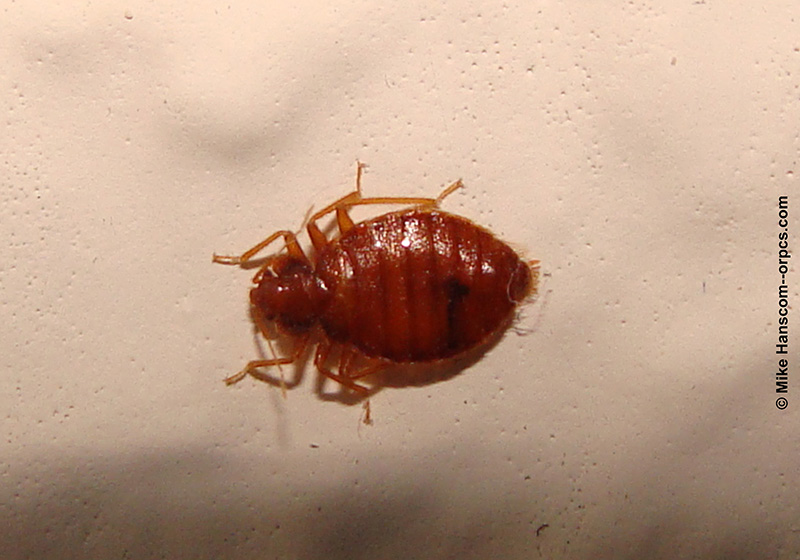Bed Bugs
What are Bed Bugs?
Bed bugs (Cimex lectularius) are flat, oval-shaped bugs without wings (3/16 inch or less), brown to reddish-brown, that most commonly frequent areas where people sleep.
Clues that you might have them:
Presence of live bugs and/or reddish bites on person, on or in beds, mattresses, in upholstered furniture and along baseboards. New bites are generally discovered after
sleeping.
If you leave them alone…
They will continue to multiply and bite. In extreme circumstances, it may be necessary to remove and destroy infested furniture, mattresses, and personal items to eliminate the bed bug scourge in one’s dwelling if infestations are not promptly addressed.
What you need to do about them:
Once bed bugs are established, successful eradication is nearly impossible on one’s own. Do-it-yourself chemical treatments are generally worthless, for all practical purposes, as the strains of bed bugs found today are typically resistant to most current insecticide products now on the market.
When do I call Leupitz Pest Control?
Call Leupitz Pest Control immediately at (503) 463-0405 to confirm their presence and formulate a plan for eradication before they cause more damage to your home or commercial property.
What can I do?
Prevention & Control
The best way to avoid a bed bug problem is to prevent their introduction in your home and personal effects. This requires due diligence when traveling (as an example, making sure that hotel rooms rented are not infested) and inspecting one’s luggage upon return. Taking a closer look at used furniture or clothing before introducing such items into the home is important. Clothing items found infested with bed bugs can be tossed into a clothes dryer and heated to kill the insects (bed bugs will die at sustained temperatures greater than 114º F).

More Details
Once thought to be a pest of a bygone era, bed bugs have made a dramatic public reappearance in the United States since the turn of the 21st century. Bed bugs can travel from location to location solely by hitchhiking on individuals, in infested items, or in means of transport of goods. During the day (except in extreme cases of infestation) bed bugs will remain hidden from view in cracks and crevices of general household items, furniture (especially bedding and bed furniture), clothing, floor baseboards, wall hangings, etc. At night, bed bugs will emerge from their hiding places for the sole purpose of feeding on the blood of a human host.
Hatched from eggs laid by a fertilized female, bed bugs will emerge as an instar (immature insects) about 1/20th of an inch in size, small enough to require a 10x or more magnifying glass for identification. During their life cycle, bed bugs will go through five instar stages before maturing into reproductive adults. Adult bugs can reach 1/8-3/16 inch in size.
The good news is that, as far as academic research has told us to date, bed bugs are not vectors of disease. The bad news is that all instar stages can bite and suck blood just as adults will. Depending on the sensitivity of the individual, bite reactions can range from virtually non-existent to skin discoloration, inflammation, and scarring. Most people have bite reactions in between these extreme ranges.
Bed bugs are attracted to their prey primarily by carbon dioxide exhaled from normal human respiration and to a lesser extent from body heat. Though they can feed as frequently as every 3-7 days, they can survive for over two months before their next meal depending on the instar stage of the bug, ambient room temperatures, and other factors.
